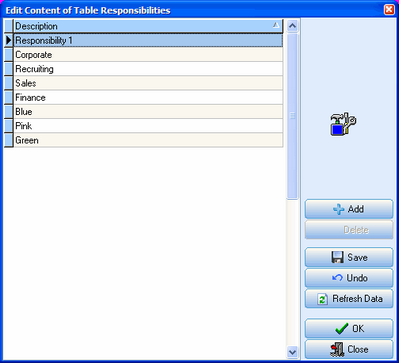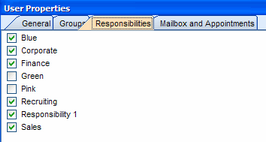Section Objectives
•Introduction to Deskflow Search Screens - focus on People screen
•Explain the difference between Structured and Unstructured information
•Entering Search Criteria
•Understanding Search results
•Use of Full Text Searching and analyzing results on the browse grid
•Introduction to Basic Power Search and Use thereof
Types of Search
There are four types of search capability provided by Deskflow:
•Database Search by Form - 90% of all searches can be done with this simple, easy to use search method.
•Phrase Search by Form - use double-quote marks to bracket a phrase that contains a comma
•Phrase Search of documents with text content (e.g. DOC, PDF, XML, XLS, PPT, RTF).
•Database Power Search - 10% of all searches can be done with complex Boolean logic search queries.
Restrict Access to Designated Records
This feature is known as User Responsibilities or Privacy Groups.
Records for People, Companies, Projects and Job Orders can be tagged as viewable by Deskflow Users with special viewing rights. All other Users will not be able to search for or view these restricted records.
This User Responsibilities feature can be turned on or off for an entire database. The option is set in the Deskflow Administrator and looks like this:
![]()
A master set of values must first be created in the drop down menu editor in the Administrator. For example:

Then a User must be assigned one or more of these values (via the Administrator Edit Users option)

Finally, a User may assign one or more of these 'Responsibility' values to a record. This marks the record as viewable only to those users who have been given the same Responsibilities
As an example, UserA is assigned two Responsibility values called PINK and BLUE.
UserA can then tag any record as BLUE and PINK
UserB with only 'PINK' rights can then search for and display all records designated as PINK but not BLUE records
Other Users who have no PINK rights will never find the records tagged as PINK.
Search by Form
In this method, each text box in the search form may have multiple phrases separated by commas, which denote OR; two text boxes containing search phrases are connected with an AND.
In summary, this type of search combines OR searches with AND searches.
The general query syntax is: (A OR B OR C) AND (D OR E OR F) AND (P OR Q OR R).
Example 1:
JobTitle: VP, Vice, Senior Vice Pres
City: New York, Boston
This query equates to (Title starts with VP OR Vice OR Senior Vice Pres) AND (City starts with New York OR Boston).
In a search, the percent symbol % may be used as meaning "any text string".
Example 2:
JobTitle: %VICE
This query equates to: find all People with the phrase VICE anywhere in the JobTitle.
The % symbol is assumed to exist at the end of the search string.
Example 3:
JobTitle: "Vice president, finance"
This query equates to: find all People with the phrase "Vice president, finance" in the JobTitle
Normally a comma would be treated as an OR condition.
Phrase Search of Document Content - Using Full-text Search
All documents may be stored as embedded binary long objects (BLOBS) in the Deskflow database.
Text in common document types such as Word, Excel, PowerPoint, Adobe Acrobat PDF, XML, Rich Text etc is automatically extracted and full-text indexed, which means that every word and phrase is searchable in real time.
For all new and changed documents, the content is indexed once a day, usually overnight. This means that a phrase search can quickly retrieve documents as of the following and subsequent days. This also applies to Resumes/CVs.
The phrase and word search capability is heavily used for keyword searches on Candidate Resumes/CVs.
Four Search Rules:
1.Prefix search where word is ended with an asterisk: finan* will return finance, financial, financing
Short noise words such as fin will not work
2.Search for exact phrase using double quotation marks like “financial manager”
3.Prefix search with one following word: al* anon will return "alcoholics anonymous"
Notice that the trailing * is only needed for one prefix in the search phrase:
4.In Future: Search for words that are close together. In this case you have to enclose words between double quotations and use ~ as the NEAR sign: “finance”~”accounting”
Power Search
A Power Search is a User-designed Boolean query comprised of BASIC queries that can be saved for re-use. It can search any data field in the database and concurrently search for document content.
•In People Power Search, each BASIC query returns a set of PeopleIDs.
•In Companies Power Search, each BASIC query returns a set of CompaniesIDs.
•In Projects Power Search, each BASIC query returns a set of ProjectsIDs.
The general structure of a Power Search query is:
QUERY1 AND | OR | AND_NOT ( QUERY2 OR QUERY3 OR QUERY4 )
where QUERY1, QUERY2 etc are BASIC queries on a set of database fields and/or documents
Lists of standard BASIC queries are shown in the Addendum.
An example of a People Power Search is:
Search for People on four data fields using editable parameters in the last column

A Power Search has the following structure:
Line |
Connector |
Br |
QueryName |
Operator |
Parameter |
Br |
1 |
( |
QUERYNAME |
OPERATOR |
PARAMETER |
|
|
2 |
CONNECTOR |
|
QUERYNAME |
OPERATOR |
PARAMETER |
) |
3 |
CONNECTOR |
|
QUERYNAME |
OPERATOR |
PARAMETER |
|
4 |
CONNECTOR |
|
QUERYNAME |
|
PARAMETER |
|
NOTE: IMPORTANT RULE 1: The first line of a Power Search must return the fewest number of records possible. This is necessary to obtain the shortest possible Power Search query time and to prevent the Power Search from overloading both the database server and the network.
If necessary, change the line sequence of the individual BASIC queries.
IMPORTANT RULE 2: BASIC queries that start with the OR connector must be enclosed with open and close brackets.